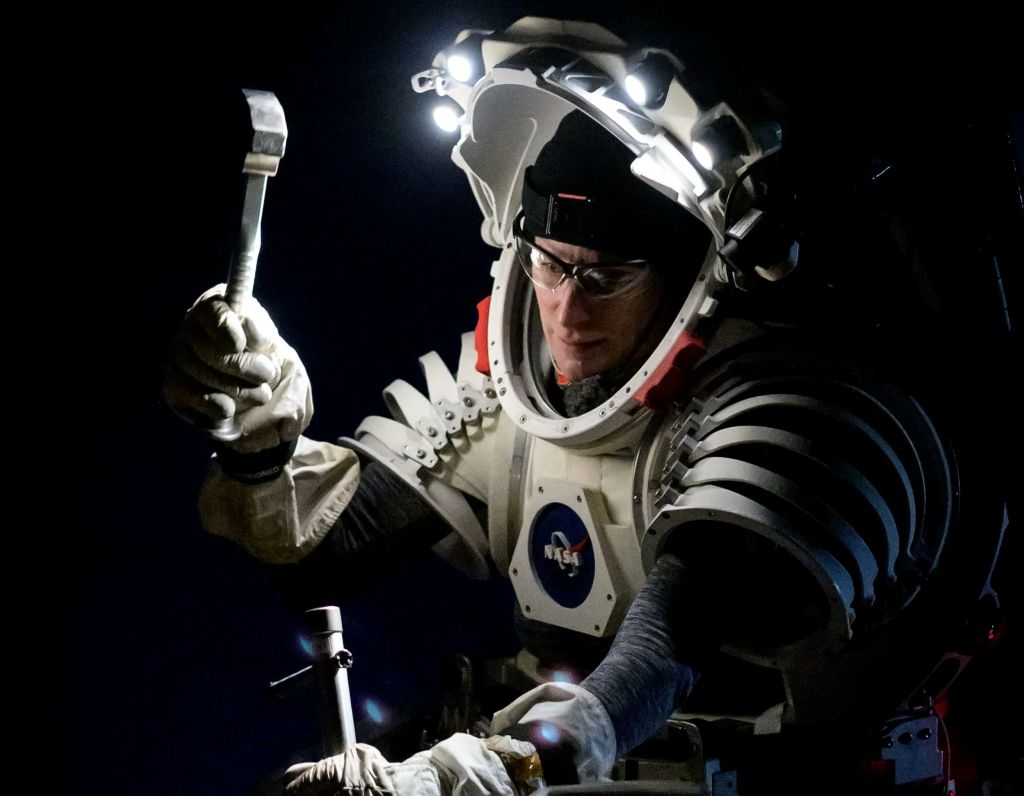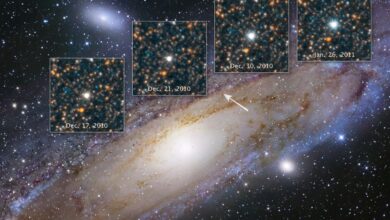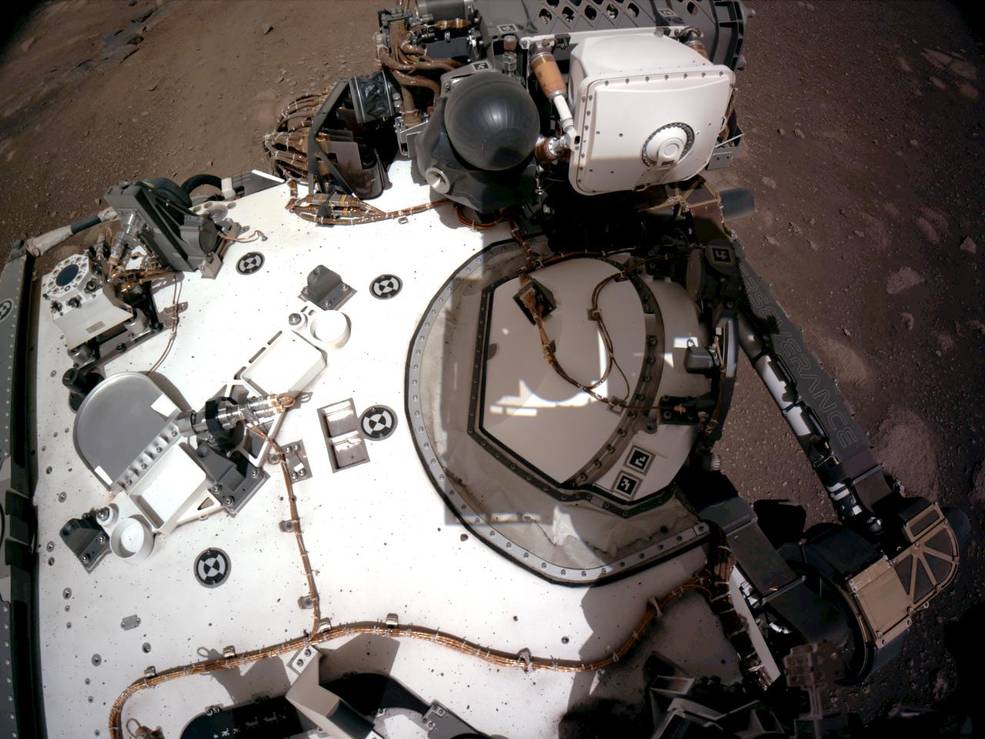June’s Night Sky Notes: Constant Companions: Circumpolar Constellations, Part III

by Kat Troche of the Astronomical Society of the Pacific
In our final installment of the stars around the North Star, we look ahead to the summer months, where depending on your latitude, the items in these circumpolar constellations are nice and high. Today, we’ll discuss Cepheus, Draco, and Ursa Major. These objects can all be spotted with a medium to large-sized telescope under dark skies.

From left to right: Ursa Major, Draco, and Cepheus.
Credit: Stellarium Web
Herschel’s Garnet Star: Mu Cephei is a deep-red hypergiant known as The Garnet Star, or Erakis. While the star is not part of the constellation pattern, it sits within the constellation boundary of Cepheus, and is more than 1,000 times the size of our Sun. Like its neighbor Delta Cephei, this star is variable, but is not a reliable Cepheid variable. Rather, its brightness can vary anywhere between 3.4 to 5.1 in visible magnitude, over the course of 2-12 years.

This composite of data from NASA’s Chandra X-ray Observatory and Hubble Space Telescope gives astronomers a new look for NGC 6543, better known as the Cat’s Eye nebula. This planetary nebula represents a phase of stellar evolution that our sun may well experience several billion years from now.
Credit: X-ray: NASA/CXC/SAO; Optical: NASA/STScI
The Cat’s Eye Nebula: Labeled a planetary nebula, there are no planets to be found at the center of this object. Observations taken with NASA’s Chandra X-ray Observatory and Hubble Space Telescopes give astronomers a better understanding of this complex, potential binary star, and how its core ejected enough mass to produce the rings of dust. When searching for this object, look towards the ‘belly’ of Draco with a medium-sized telescope.

NASA’s Spitzer, Hubble, and Chandra space observatories teamed up to create this multi-wavelength view of the M82 galaxy. The lively portrait celebrates Hubble’s “sweet sixteen” birthday .X-ray data recorded by Chandra appears in blue; infrared light recorded by Spitzer appears in red; Hubble’s observations of hydrogen emission appear in orange, and the bluest visible light appears in yellow-green.
Credit: NASA, ESA, CXC, and JPL-Caltech
Bode’s Galaxy and the Cigar Galaxy: Using the arrow on the star map, look diagonal from the star Dubhe in Ursa Major. There you will find Bode’s Galaxy (Messier 81) and the Cigar Galaxy (Messier 82). Sometimes referred to as Bode’s Nebula, these two galaxies can be spotted with a small to medium-sized telescope. Bode’s Galaxy is a classic spiral shape, similar to our own Milky Way galaxy and our neighbor, Andromeda. The Cigar Galaxy, however, is known as a starburst galaxy type, known to have a high star formation rate and incredible shapes. This image composite from 2006 combines the power of three great observatories: the Hubble Space Telescope imaged hydrogen in orange, and visible light in yellow green; Chandra X-Ray Observatory portrayed X-ray in blue; Spitzer Space Telescope captured infrared light in red.
Up next, we celebrate the solstice with our upcoming mid-month article on the Night Sky Network page through NASA’s website!





